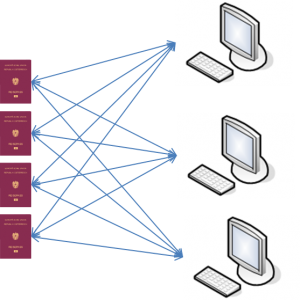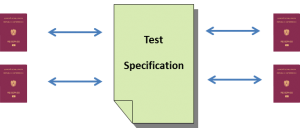The German BSI has published a maintenance release of technical guideline TR-03105 Part 5.1 Version 1.41 for inspection systems with Extended Access Control (EAC).
Since last release of TR-03105 several (mostly editorial) comments were resolved and integrated in this maintenance release. Part 5.1 describes conformity tests for inspection systems with protocols like PACE, Terminal Authentication and Chip Authentication typically used at (automatic) border control, e.g. eGates.
![]()
Besides some editorial changes the new version 1.41 contains the following modifications:
- ISO7816_G_36: If a EF.CardAccess contains an invalid OID for PACE-CAM, the inspection system shall use an alternative mapping protocol, that is supported by the chip.
- ISO7816_G_37: This test case is deleted, because it’s not necessary for an inspection system to check that GM and IM are also supported by the chip besides PACE-CAM.
- ISO7816_G_41: Curves with parameterID 0, 1 and 2 are based on DH and DH is not supported in context of PACE-CAM. So these curves are deleted.
- LDS_H_86: Correction in expected result (PASS instead of FAIL).
- Chapter 7: Relevant algorithms and OIDs for PACE, that must be supported by the inspection system, are added.
- Chapter 7: Update of hashing algorithms.
For the next major update there should be a discussion how to handle fingerprints (data group 3, EF.DG3) and iris (data group 4, EF.DG4) of people who don’t have a finger or an iris. In this case these data groups should store an empty but valid data structure. Currently there are no test cases specified for these situations in TR-03105 Part 5.1. But inspection systems should be able to handle such cases also, of course.
So you can see, that test specifications in context of eMRTD (ePassports) and inspection systems are always in progress. If you have any comments concerning these test specifications or ideas of test cases, that should also be performed focusing on interoperability, please don’t hesitate to contact me or leave a comment.



